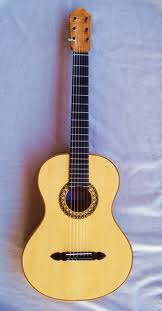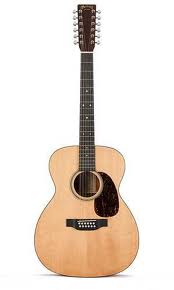
Division of guitars according to the method of creation and formation the tone
ACOUSTICAL
After the string vibrates, a tone is created, which is guided by the bridge and the resonant opening into the instrument body. There, the front plate, the spacing of the ribs, and the shape of the tool body are strengthened to obtain the necessary qualities, such as color (timbre). The quality of these guitars is therefore entirely dependent on the correct design and the material from which they are made.
They excel especially in irreplaceable color and purity of tone and independence from the apparatus.
The disadvantage can be low volume, especially when playing in a noisy environment.
It would very much rise in price if some individuals learned to shut up h ... and listen :-)
Includes:
Spanish guitar
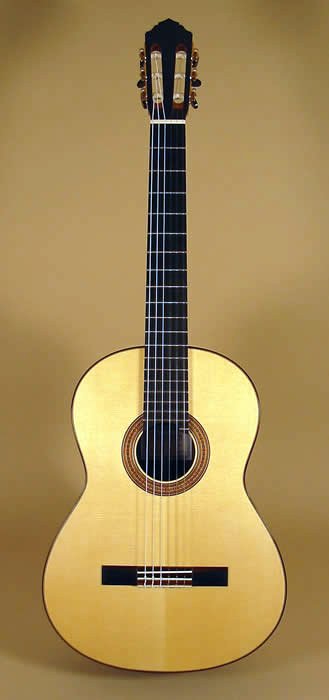
The other guitars are distinguished mainly by a greater neck width (50 mm, +/- 2 mm), a more colorful tone, always a round resonance hole, and nylon strings, which, unlike other guitars, are fastened to the bridge by knots created by the strings. See Guitar Strings for more info.
The right hand plays almost exclusively using fingers, the plectrum is an exception (some jazz styles).
Typical is nail play, which gives us a sharp and distinctive tone.
It is mainly used in classical music, flamenco, Brazilian music and jazz.
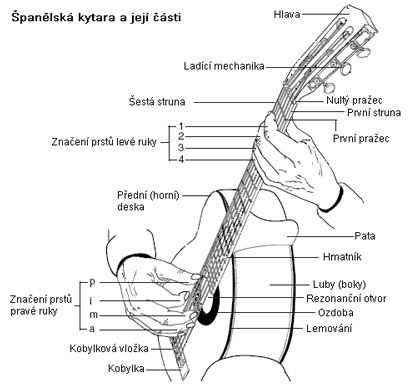
Jumbo guitar

It differs from Spanish guitar by narrower fingerboard and metal strings. Typical is the more robust instrument, which usually allows for brighter bass tones. The neck is adapted to a greater string tension, often with a reinforced wire that can accommodate any unwanted bend. The strings are fixed to the bridge by means of pins. The right hand plays with fingers or plectrum.
Jumbo is used in many musical styles, the most common are country, folk, jazz, blues, rock.
Western guitar
So far I have not found the fundamental difference between jumbo and western guitar. Perhaps just the jumbo has a more robust body and thus also more penetrating bass.
Jazz Guitar
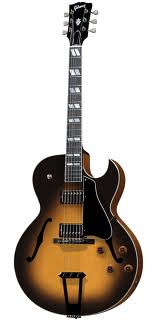
It has an arched top plate with two sound apertures, so-called ephids, which are similar to the violin's violins. It is equipped with a cut-out for the left hand (so-called cutaway) for better movement and easier to reach the heights. Another specific feature is the pickguard, which is the impact area for the picker, and a hand that prevents damage to the surface of the front panel. As the name itself suggests - it is typical of jazz music.
Hawaiian guitar
It is similar to the Spanish guitar, tuned into the main chord, and it differs mainly in the way of the game: We cross the strings with a metal tunic in our hand, shortening the tone of the tone.
Dobro
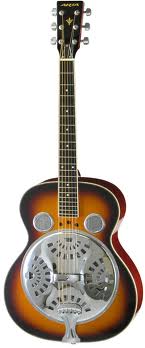
The resonant guitar (the body is fitted with a large aluminum resonator) with a wooden body. For good guitar rounded neck, we can play either classic guitar style or so called slide style (using a handcuff like a Hawaiian guitar), where the tool can be placed horizontally on the knees. It has a strong and bell-like sound and is used mainly in country and bluegrass.
Acoustic bass
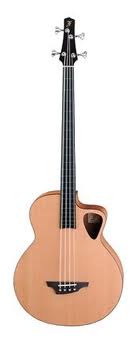
is a stringed bass tool that has a hollow body similar to a western guitar, but slightly larger. Most acoustic basses are fitted with sleepers, but they are also unprotected. The instrument normally has four stunts, the tuning is similar to a double bass or an EADG bass (an octave below the deeper strings of a normal guitar). Exceptionally, multiplayer tools also appear. Because hearing acoustic bass without an amplifier can be difficult, the instruments are usually equipped with a piezoelectric sensor.
The first modern acoustic bass was developed by Ernie Ball in the early 1970s. At the end of the 80's and during the 1990's, the acoustic bass was used during MTV Unplugged concerts.
ELECTROACOUSTIC (SEMI-ACOUSTIC)
They are similar to acoustic guitars, they differ only in built-in sound pickup electronics (kennel sensor, built-in microphone, Jack 1/4 connector input, etc.). Their popularity is growing, thanks to the ability to sound a tool. It often helps to solve the band's loudness problem with louder instruments (drums, electric basses, wind instruments).
ELECTRICAL (ELECTRONIC)

An electric guitar (more accurately electrophonic) is a type of guitar in which electromagnetic sensors convert the vibration of strings with a steel core into an electric current that is guided by the guitar into an amplifier. An electric guitar often uses various effects to adjust the sound. The resulting sound is also greatly influenced by the amplifier and speaker used. Guitars are of a variety of shapes.
See article on Wikipedia.





